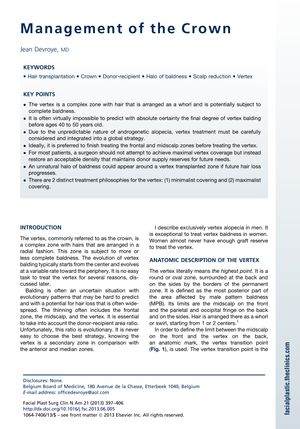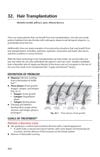Management of the Crown: Addressing Vertex Baldness in Hair Transplantation
August 2013
in “
Facial Plastic Surgery Clinics of North America
”

TLDR Treat the front and middle scalp before the vertex in hair transplants, aim for good density, use non-surgical options for young people, and customize treatment for natural results.
In the 2013 document "Management of the Crown," Jean Devroye, MD, addressed the challenges of treating vertex baldness in hair transplantation. The vertex, with its unique hair whorl pattern, presents difficulties in predicting the extent of balding until a patient is 40 to 50 years old, complicating treatment planning. The document advises prioritizing the frontal and midscalp areas before the vertex and suggests aiming for acceptable density rather than maximal coverage to conserve donor hair. It recommends non-surgical treatments like finasteride and minoxidil, particularly for younger patients, and views scalp reduction as an outdated technique. Follicular hair transplantation is endorsed as the standard for natural results. The document highlights the need for individualized treatment plans and the surgeon's skill in managing the vertex, emphasizing the principle of "first, do no harm."








